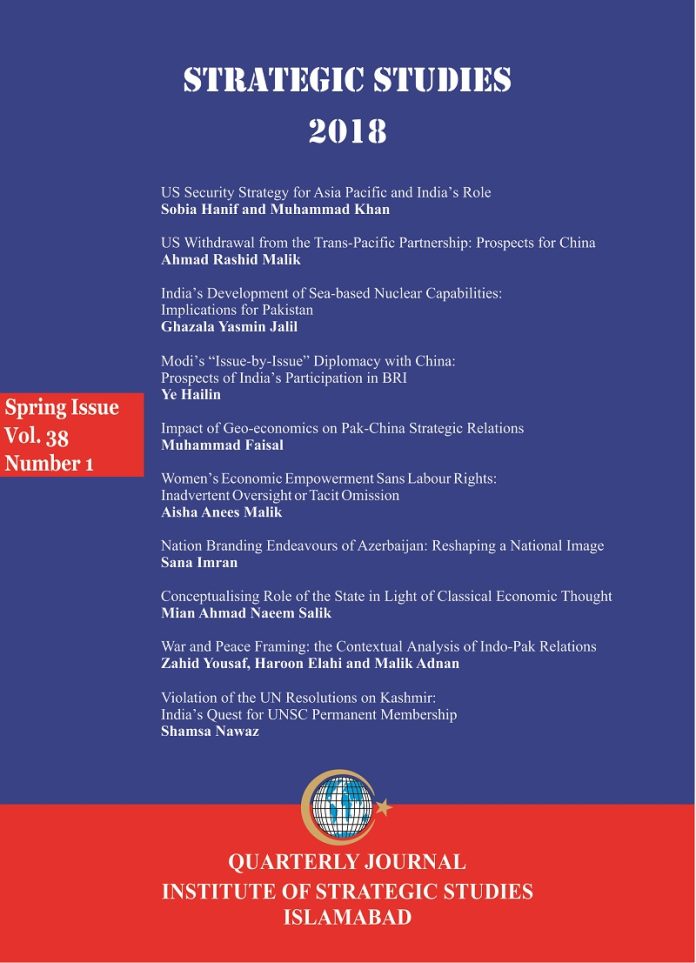Abstract
India is rapidly building up its navy in order to develop blue-water capabilities and increase its prowess in the Indian Ocean and beyond, which is integral to India’s grand strategy to attain a regional and global power status. This poses a threat to the regional states. It, especially, heightens Pakistan’s threat perception, whose main security threat comes from India. Of all the gravest concerns for Pakistan is India’s development of nuclear triad, which is mainly comprised of its nuclear powered submarine fleet, armed with a range of nuclear-tipped missiles, which gives it a second-strike capability. The paper looks at how India’s development of sea-based nuclear capability would affect nuclear deterrence stability in South Asia. The paper assesses the Indian naval nuclear development and also whether a second strike capability can potentially stabilises deterrence in South Asia. It finds that the development of a nuclear triad, in general, and second strike capability, in particular, would not stabilise deterrence or bring strategic stability to South Asia. In fact, it would increase arms race tendencies. It would eventually brings instability and further uncertainty to the region with complex command and control issues involved, and the risk of accidental or unauthorised launch.













